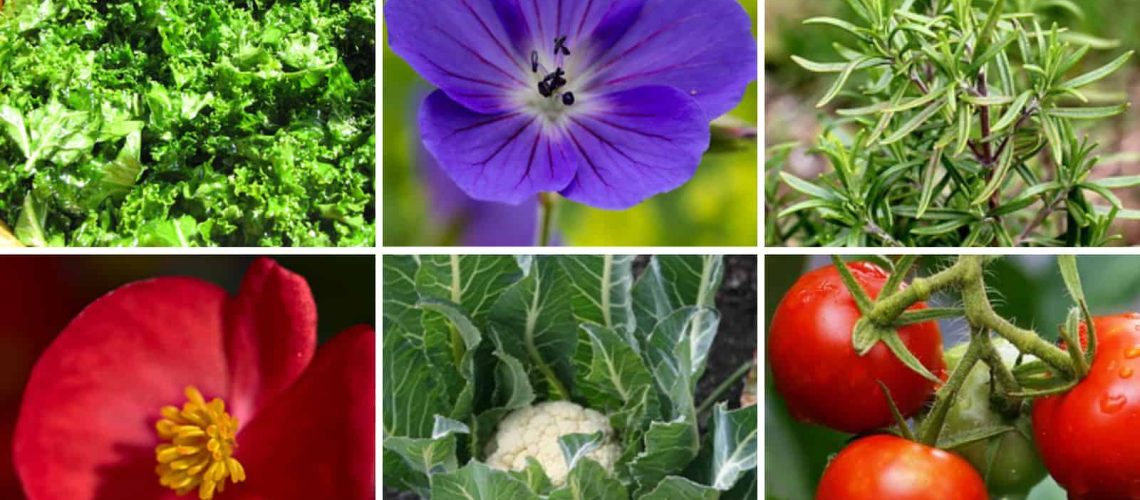Florida offers unique gardening opportunities due to constant high humidity, long hot summers, and mild winter temperatures. Whether you want to plant vegetables and herbs or subtropical flowers, you must know which plants thrive in Florida’s balmy environment. When planning your garden, choose plants based on where you live, according to the four Florida gardening zones.
Understanding Plant Hardiness Zones
The United States contains various climates, so the USDA plant hardiness zone map helps landscapers and gardeners understand what will best grow in their area. The map shows growing zones per the average lowest temperatures. Growing zones in Florida range from 8A to 11B, starting at the top and moving down the panhandle to denote the increasingly warm temperatures towards the southernmost coastline.
To dig deeper into Florida’s plant hardiness zones, we’ve done some of the dirty work for you below. Learn which fruits, vegetables, herbs, and flowers grow best in your gardening zone.
Zone 8
Zone 8 winter temperatures drop no lower than 10 to 20 degrees Fahrenheit. The best plants for Zone 8 can survive temporary dives in temperature but grow best in mild winters and hot summers. Many can resist drought conditions.
Vegetables
- Cantaloupe
- Okra
- Tomatoes
Fruit Trees
- Anna or Gala Apple
- Kumquat
- Peaches
Cooking Herbs
- Bay Laurel
- Rosemary
- Sage
Garden Flowers
- Asiatic Lily
- Lantana
- Mexican Petunia
Zone 8A Areas Include: Century, Holmes County, and Laurel Hill
Zone 8B Areas Include: Ocean City, Panama City, and Tallahassee
Zone 9
Zone 9 winter temperatures drop no lower than 20 to 30 degrees Fahrenheit. With such mild winters, Zone 9 allows for year-round gardening and planting.
Vegetables
- Broccoli
- Cauliflower
- Spinach
Fruit Trees
- Avocado
- Mandarin Orange
- Starfruit
Cooking Herbs
- Basil
- Coriander
- Mint
Garden Flowers
- Black-eyed Susan
- Hydrangea
- Wisteria
Zone 9A Areas Include: Altoona, Inverness, and Laguna Beach
Zone 9B Areas Include: Buenaventura Lakes, Key Vista, and Oakland
Zone 10
Zone 10 winter temperatures drop no lower than 30 to 40 degrees Fahrenheit. One of the warmer Florida gardening zones, it allows for annual planting.
Vegetables
- Jicama
- Peanuts
- Tomatillos
Fruit Trees
- Allspice tree
- Carica Papaya
- June Plum
Cooking Herbs
- Curry Leaf
- Ginger
- Mexican Tarragon
Garden Flowers
- African Lily
- Geraniums
- Aloe
Zone 10A Areas Include: Bonita Springs, Cape Coral, and St. Petersburg
Zone 10B Areas Include: Boca Raton, Hillsboro Beach, and West Miami
Zone 11B
Zone 11B winter temperatures drop no lower than 45 to 50 degrees Fahrenheit. Plants never worry about freezing temperatures in Zone 11B.
Vegetables
- Beets
- Carrots
- Kale
Fruit Trees
- Macadamia
- Mango
- Natal Plum
Cooking Herbs
- Chives
- Mint
- Thyme
Garden Flowers
- Begonias
- Drumstick Allium
- Ponytail Palm
Zone 11B Areas Include: Big Pine Key, Key West, Stock Island
Know What to Plant in Your Florida Garden
Use this simplified guide to Florida gardening zones to start planning your planting for successful landscaping and gardening. Call (239) 242-0900 for further planting guidance from CWG Landscape in Cape Coral.

